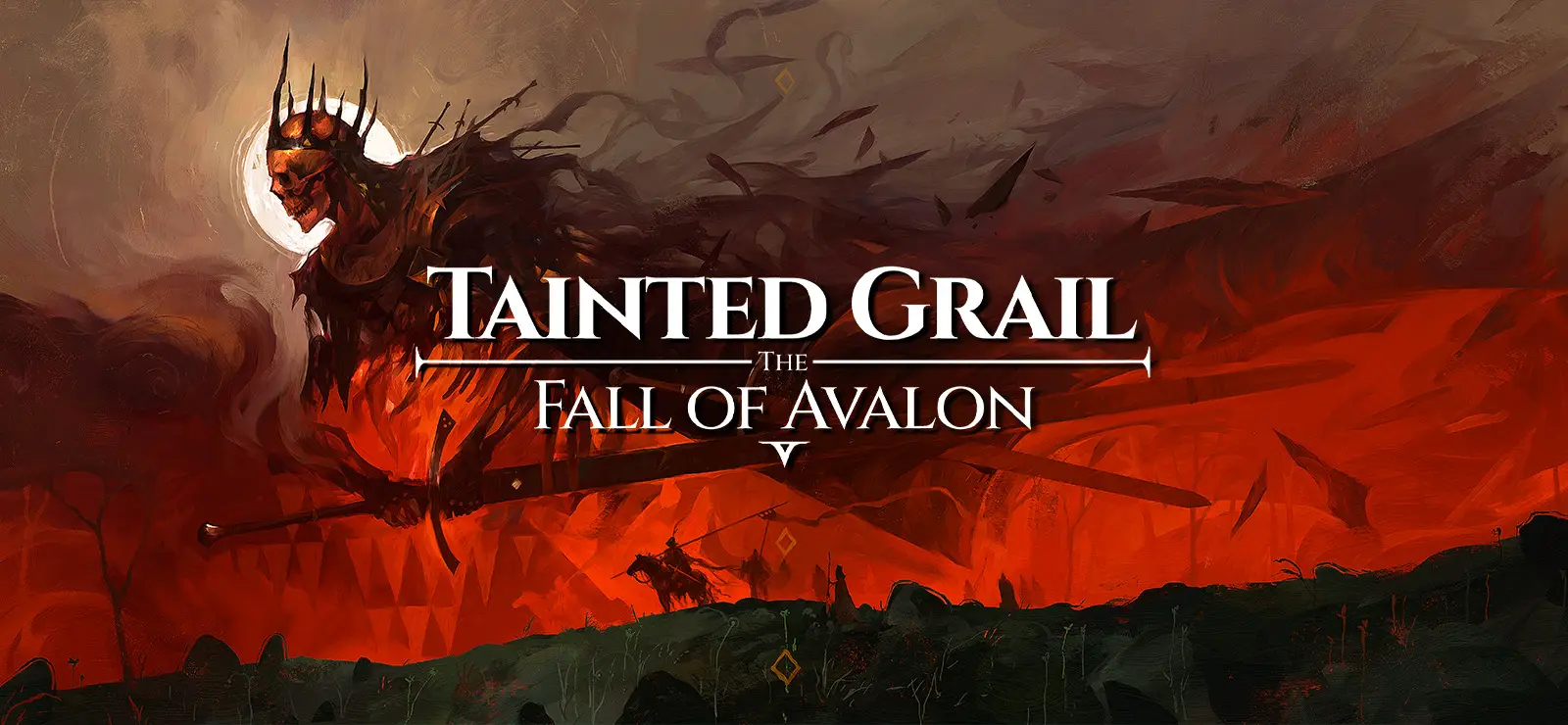The RPG renaissance of 2025 continues its remarkable momentum with the arrival of Questline and Awaken Realms’ ambitious project, Tainted Grail: The Fall of Avalon. After spending over two years refining itself through early access development, this dark fantasy experience has finally emerged in its complete form, ready to challenge players with its uncompromising vision of Arthurian legend.
This reimagining of King Arthur’s tales presents a world far removed from traditional heroic narratives. The legendary monarch has vanished into history, leaving behind a realm consumed by decay and supernatural corruption. Players find themselves thrust into Avalon’s dying days, where two catastrophic forces threaten to erase civilization entirely: the reality-distorting phenomenon known as Wyrdness and the devastating Red Death plague that spreads mercilessly across the land.
The game establishes its bleak foundation immediately, challenging players’ expectations about heroic fantasy adventures. Rather than empowering players with godlike abilities and triumphant storylines, Tainted Grail deliberately maintains an atmosphere of vulnerability and desperation. This approach creates a gaming experience that tests moral boundaries and survival instincts while navigating the remnants of a once-magnificent civilization.
Classic RPG Foundations With Modern Sensibilities
Tainted Grail: The Fall of Avalon positions itself firmly within the first-person, open-world RPG tradition, drawing clear inspiration from genre-defining classics like The Elder Scrolls IV: Oblivion and Kingdom Come: Deliverance. However, the game deliberately subverts traditional power fantasy elements in favor of creating something more psychologically demanding and emotionally complex.
The developers have designed every aspect of the world to ensure players never feel completely secure, regardless of character progression or equipment acquisition. This design philosophy creates an experience that feels deliberately slow-paced, frequently depressing, and often cruel to player expectations. Even experienced RPG veterans will find themselves tested by the game’s unforgiving approach to player comfort and conventional reward structures.
Despite these challenging elements, the game offers refreshing perspectives on player choice implementation, narrative construction, and the delicate balance between player investment and meaningful rewards. The harsh atmosphere serves a purpose beyond simple difficulty escalation, creating genuine emotional investment in story outcomes and character relationships.
Narrative Excellence Drives the Experience Forward
Following the tradition established by its classical inspirations, Tainted Grail: The Fall of Avalon places storytelling and world-building at the absolute center of its identity. While gameplay mechanics certainly deserve attention and analysis, the game functions best when approached primarily for its compelling narrative elements, particularly for players who appreciate stories with multiple branching outcomes determined by meaningful choice consequences.
The narrative component forms such a crucial foundation for the entire experience that detailed plot discussion risks spoiling essential discoveries and revelations. However, the alternate-Arthurian premise provides sufficient context for understanding the game’s thematic ambitions without revealing specific story beats that players should experience firsthand.
What can be safely discussed about the storytelling approach is its commitment to keeping players intellectually and emotionally engaged throughout the experience. The narrative structure incorporates numerous major revelations and plot twists that serve dual purposes: maintaining player investment through surprise and encouraging careful consideration of future decisions and their potential consequences.
The story consistently presents players with significant choices that fundamentally alter narrative outcomes and major plot thread developments. This approach adds substantial replay value to the experience, achieving the kind of meaningful choice-driven gameplay that many self-proclaimed choice-focused RPGs struggle to deliver effectively.
Drawing Inspiration From Genre Classics
Tainted Grail: The Fall of Avalon embraces its influences without shame or apology, demonstrating clear understanding of what RPG enthusiasts desire from their gaming experiences. Rather than pursuing innovation for its own sake, the game focuses on delivering refined versions of beloved mechanics and storytelling approaches that have proven successful in previous generations.
This design philosophy becomes immediately apparent in the game’s opening sequence, which places players in a prison cell with no apparent escape route until external circumstances provide liberation. This scenario will feel familiar to many players because it directly references The Elder Scrolls IV: Oblivion’s memorable introduction, establishing the connection between these games from the very beginning.
These references and homages continue throughout the story development and world-building processes, though the relationship transcends simple imitation. A more accurate description might position Tainted Grail: The Fall of Avalon as what Oblivion might have become if it had matured significantly and embraced darker thematic elements more thoroughly.
The game’s world thrives on oppressive and unsettling atmospheric elements, achieving a level of maturity that Oblivion never quite reached despite its occasional dark moments. While Cyrodiil certainly contained moments of oppression and danger, The Fall of Avalon operates on a completely different atmospheric level, maintaining its grim tone throughout the entire experience.
Atmospheric Comparisons and Influences
In many respects, The Fall of Avalon creates the impression of what Oblivion might have become if developed by Grinding Gear Games, the studio behind the Path of Exile series and its upcoming sequel. The Path of Exile franchise has earned recognition for its deeply grim and bleak world-building approaches and atmospheric construction, and The Fall of Avalon adopts similar design philosophies while maintaining its Elder Scrolls-inspired foundation.
The game also incorporates distinct elements reminiscent of The Witcher series, particularly in enemy design choices and soundtrack composition. These influences become especially noticeable through specific creature types and musical arrangements that echo CDPR’s beloved RPG franchise.
Players will encounter enemies called Drowners near bodies of water, directly referencing The Witcher’s monster taxonomy. The musical score frequently evokes The Witcher’s distinctive sound design so closely that players might momentarily forget they are experiencing a different game entirely, were it not for the first-person perspective that maintains Tainted Grail’s unique identity.
However, Tainted Grail: The Fall of Avalon should not be dismissed as simply a clone or imitation of these influential titles. Instead, these established games provide foundational soil from which The Fall of Avalon draws its creative nutrients and inspiration. The development team at Questline appears to have studied what games like Oblivion, Path of Exile, and The Witcher accomplished successfully, then used those lessons to run their own creative race rather than competing directly with established franchises.
This approach allows the game to chart its own distinctive path while benefiting from proven design principles, manifesting most clearly in its mature storytelling approach and extensive world-building efforts that distinguish it from its inspirations.
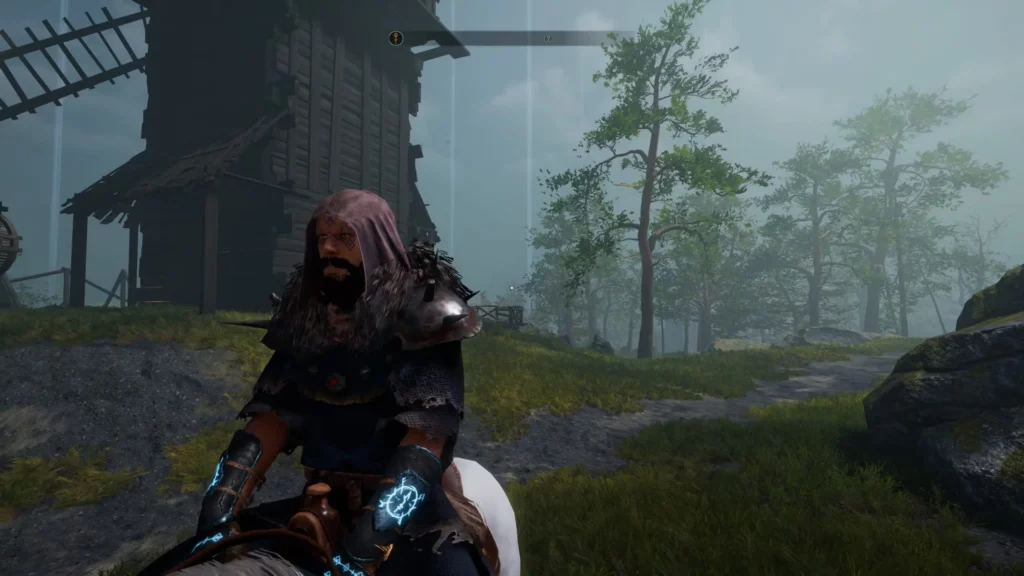
Character Development as World-Building Foundation
Tainted Grail: The Fall of Avalon constructs its world primarily through two interconnected approaches: deep lore integration and exceptional character development. Like most RPGs in this tradition, the game includes numerous lore entries scattered throughout the open world environment for dedicated players to discover and study.
However, what distinguishes The Fall of Avalon from many contemporary RPGs is its refusal to rely too heavily on optional lore entries as the primary world-building mechanism. Many RPGs that depend primarily on scattered lore documents for world construction end up featuring shallow character development as an unintended consequence, but The Fall of Avalon successfully achieves balance between these two approaches.
Throughout extensive gameplay sessions, every encountered NPC proved interesting and engaging, possessing substantial dialogue options and personal stories worth exploring. The voice acting quality remains consistently excellent across all character interactions, bringing genuine personality to every conversation partner regardless of their narrative importance.
Despite occasional awkward animation sequences and uncanny facial expressions that break immersion momentarily, virtually every NPC in The Fall of Avalon merits player attention and conversation time. Whether engaging with main characters, side characters, or seemingly random NPCs, each interaction feels unique and worthwhile, rarely creating the impression of meeting identical personality types repeatedly.
Merchant Characters Transcend Traditional Limitations
Even The Fall of Avalon’s merchant characters feel like genuine people rather than interactive vending machines, addressing a common complaint about RPG character design. Traditional RPGs often treat merchants as mindless transaction interfaces with minimal personality or backstory, but The Fall of Avalon invests significant effort in giving these characters distinctive personalities and personal histories that make them feel authentically alive within the game world.
The game’s characters also regularly receive additional dialogue options as players progress through the main story, making return visits worthwhile for catching up on recent events and gaining new perspectives on unfolding developments. This dynamic approach to character interaction creates ongoing relationships that evolve naturally alongside story progression.
This character-focused approach allows The Fall of Avalon to establish more intimate connections with players through world-building techniques that emphasize personal interaction over passive information consumption. Instead of requiring players to simply read about the world’s lore through scattered documents, they can engage in meaningful conversations with the characters who actually inhabit and experience this world directly.
The result creates a living, breathing world that feels active and dynamic alongside player progression, rather than serving as a simple static backdrop for predetermined story events. This approach contributes significantly to the game’s immersive qualities and emotional investment potential.
Visual Excellence in Environmental Design
Tainted Grail: The Fall of Avalon’s world combines substantial content with impressive visual presentation that enhances the overall experience significantly. From a purely aesthetic standpoint, the game’s open world environment delivers stunning visual quality, despite maintaining dark and oppressive atmospheric elements throughout most locations.
The open world design creates one of those rare gaming environments that easily distracts players from their intended objectives, not merely because of its impressive size and scope, but primarily due to its remarkable environmental diversity. Unlike many modern RPGs that rely heavily on asset reuse for dungeons, villages, and similar locations, virtually every area in The Fall of Avalon provides unique visual, atmospheric, and behavioral characteristics that make exploration feel genuinely rewarding.
This environmental diversity extends beyond surface-level aesthetic differences into meaningful gameplay variations that affect player experience and strategic approaches. Each location truly feels like somewhere completely new and unexplored, making occasional detours from main objectives feel worthwhile rather than repetitive or tedious.
The diversity becomes particularly apparent through the game’s various biome designs, which players can witness and experience firsthand as they progress through The Fall of Avalon’s narrative structure. What makes this environmental variety even more appealing is the careful attention to zone sizing, ensuring that each major area avoids becoming overwhelmingly large or monotonous before players naturally transition to new locations.
The Fall of Avalon’s open world also succeeds purely as visual spectacle, providing sufficient detail and visual fidelity to compete favorably with some of today’s most acclaimed RPG productions. The attention to environmental detail and artistic construction creates a world that rewards careful observation and exploration beyond simple objective completion.
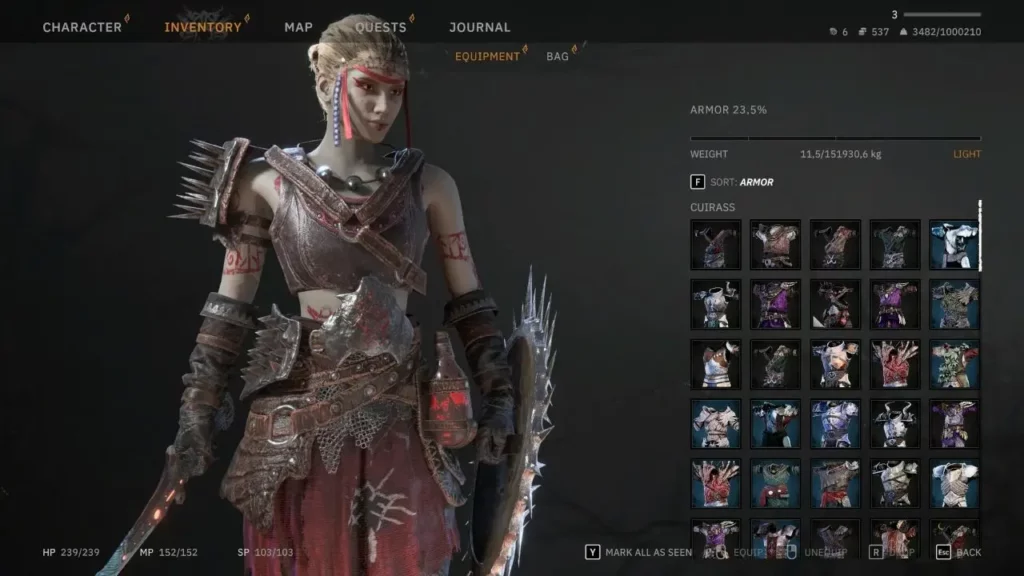
Exploration Mechanics Reward Player Curiosity
Tainted Grail: The Fall of Avalon extends its excellence beyond storytelling and world-building into open-world exploration mechanics that represent some of the game’s strongest gameplay features. As previously established, this success stems largely from exceptional environmental diversity that prevents visual fatigue even during extended exploration sessions.
The game draws favorable comparisons to Oblivion’s exploration systems while addressing some of that classic’s limitations. Where Oblivion’s caves and dungeons often felt repetitive despite featuring distinct layouts, The Fall of Avalon ensures that each location provides genuinely unique experiences that justify thorough exploration efforts.
Players who invest time in comprehensive world exploration receive meaningful rewards proportional to their thoroughness and dedication. The game world contains numerous collectible items scattered throughout various locations, with most collectibles serving as crafting materials that integrate directly into gameplay systems rather than existing purely for completion metrics.
Since the game places heavy emphasis on crafting mechanics, particularly alchemy systems, these material rewards provide genuine gameplay value rather than superficial collection achievements. Alchemy receives particularly prominent attention within The Fall of Avalon’s systems, and the game’s balanced encumbrance mechanics allow players to collect materials extensively without feeling constrained by inventory limitations.
Players can also purchase and decorate homes throughout The Fall of Avalon’s world, though the game would benefit from improved tutorial systems for explaining these housing mechanics more clearly to new players.
Dynamic Encounters Enhance Exploration Value
The Fall of Avalon’s open world provides rewards beyond simple material collection, offering numerous random encounters with unique characters and enemies that players would miss entirely by focusing solely on main quest objectives. These encounters add unpredictability and narrative depth to exploration activities.
Players who choose to investigate caves or other locations away from primary quest paths might encounter peculiar NPCs who claim non-human origins, or wandering into environmental hazards like bee swarms might trigger meetings with mysterious characters who direct players toward their leaders or other significant figures.
These random encounters integrate seamlessly with The Fall of Avalon’s quest system design, which abandons conventional map markers that explicitly indicate quest locations. Instead, players must engage thoroughly with every NPC’s dialogue options and explore every optional area if they hope to discover and complete every available side quest, of which the game offers substantial quantities.
Much like The Elder Scrolls V: Skyrim and the upcoming Borderlands 4, some side quests automatically appear in the player’s quest log when they explore certain optional areas. This approach not only encourages thorough exploration but also enhances The Fall of Avalon’s immersive qualities by integrating quest discovery into natural world exploration rather than artificial menu navigation.
Quest Design Philosophy Emphasizes Quality Over Quantity
The Fall of Avalon’s main story quests maintain consistently high quality and reward standards, but the side quest content matches this excellence rather than feeling like secondary content. Players will not encounter simple fetch-and-kill quest designs apart from bounty missions available at each zone’s primary settlement location.
Instead, The Fall of Avalon’s side quests each contain substantial narrative content worth experiencing firsthand, contributing to world-building efforts while providing opportunities for meaningful decision-making that genuinely affects both character relationships and environmental conditions.
While the quest system succeeds in creating seamless and immersive experiences, it does present one significant challenge for player progression. Story advancement in The Fall of Avalon occasionally encounters substantial difficulty spikes that can prevent forward progress until players address these obstacles.
Since the game lacks level scaling mechanics, players commonly encounter enemies with excessive health pools and damage output relative to their current character level, equipment quality, and statistical development. This situation essentially forces players to engage with side quest content to gain necessary experience points for leveling up and acquiring the strength needed for story progression.
While this design encourages thorough exploration and side content engagement, it can limit player agency regarding preferred playstyle approaches and pacing preferences, potentially frustrating players who wish to focus primarily on main story content.
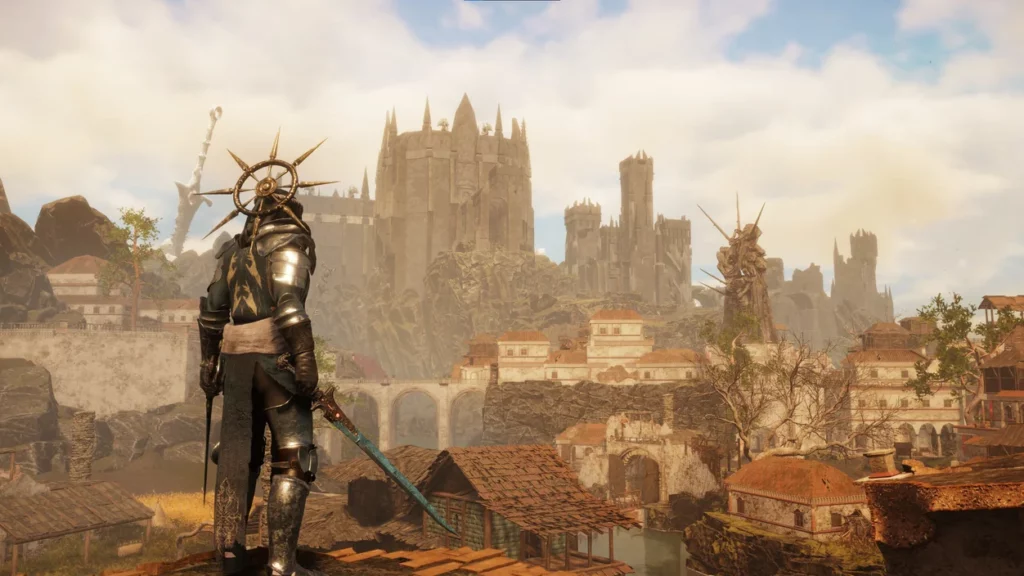
Combat System Embraces Classical Simplicity
Despite Tainted Grail: The Fall of Avalon’s excellence in storytelling, world-building, exploration, and quest design, the combat system presents some notable limitations through its overly simplistic approach and significant gear system imbalances that affect overall gameplay experience.
The combat mechanics embrace the straightforward approach common to first-person open-world RPGs, following design principles established by games like Oblivion rather than attempting innovative combat system development. Obsidian Entertainment’s Avowed represents one recent attempt to innovate first-person RPG combat mechanics, though even that effort fell short of achieving complete success in some areas.
The Fall of Avalon deliberately returns to classic RPG combat design philosophy, featuring mechanics that essentially focus on single-button weapon swings and spell casting rather than complex combination systems or advanced timing requirements. While this approach accomplishes its basic functional requirements, it can become repetitive during extended gameplay sessions, particularly after reaching approximately twenty hours of total playtime.
Specialization choices occur through dialogue selections during the opening prison sequence, allowing players to develop characters focused on stealth-based ranged combat or other approaches. While these systems provide some initial entertainment value, frustration often develops around the twenty-hour mark as players begin recognizing significant limitations within combat mechanics.
Combat System Technical Limitations
Enemy hitbox detection presents particularly problematic issues that significantly affect combat quality, especially for ranged weapon users. When firing ranged weapons at enemies in The Fall of Avalon, achieving successful hits requires frustratingly precise aim that often proves more challenging than intended by design philosophy.
Missing a single shot alerts enemy forces to player presence, while missing two consecutive shots can trigger entire enemy groups to charge toward the player’s location. For successful shot registration, aim must be frustratingly precise, often creating more problems than solutions for players attempting stealth-based approaches.
These accuracy requirements compare unfavorably even to notoriously realistic and unforgiving games like Kingdom Come: Deliverance and its sequel, which earned reputations for demanding precise combat execution. Despite appreciating realistic combat mechanics in those games, landing ranged shots proves easier in Kingdom Come titles than in The Fall of Avalon.
Melee combat encounters similar but distinct challenges that affect overall combat satisfaction. The Fall of Avalon does include dash mechanics that function as dodge abilities at stamina cost, and parrying attacks remains possible for creating enemy vulnerability windows. However, the key word in that description is possible rather than practical.
The timing window for successful parry execution proves extremely narrow, reaching the point where many players abandon parrying attempts entirely after several hours of failed execution attempts. This limitation removes significant tactical depth from combat encounters and forces players into more limited strategic approaches.
Artificial Intelligence and Environmental Issues
Enemy artificial intelligence demonstrates consistently clunky behavior throughout most combat encounters, creating immersion-breaking situations that affect overall game quality. Enemies frequently become stuck within environmental geometry or pace rapidly back and forth in apparent infinite loops that prevent proper combat engagement.
The Fall of Avalon’s enemy chase mechanics also prove easily exploitable during combat retreat attempts. When fleeing from enemies, they will eventually cease pursuit behavior, but then freeze in place completely rather than returning to patrol patterns or defensive positions.
This freezing behavior allows players to turn around and attack stationary enemies with ranged weapons or spells until they achieve victory without facing retaliation. These exploitation opportunities not only break immersion but also trivialize combat encounters by removing intended challenge elements.
Additional combat feedback and visual cue limitations compound these problems by making combat feel disconnected and unresponsive. The combination of minimal feedback systems, problematic artificial intelligence, and technical limitations creates mixed combat experiences that vary significantly depending on player approach and enemy encounter circumstances.
Gear System Imbalances Affect Character Development
Initially, Tainted Grail: The Fall of Avalon’s equipment system appears promising through its wide variety of armor sets and weapon options, creating similarities to modern RPGs like Avowed rather than the more limited equipment systems found in classical inspirations. Unfortunately, severe balance issues prevent the system from achieving its apparent ambitions.
The system could potentially function adequately in its current state, but clear design intentions suggest developer aspirations for more sophisticated equipment mechanics than currently implemented successfully.
One of the most problematic imbalances involves attribute requirements for weapons and armor throughout the game. Players can easily discover useful equipment during early gameplay phases, but the statistical requirements for using this equipment often prove far too high for reasonable character development timelines.
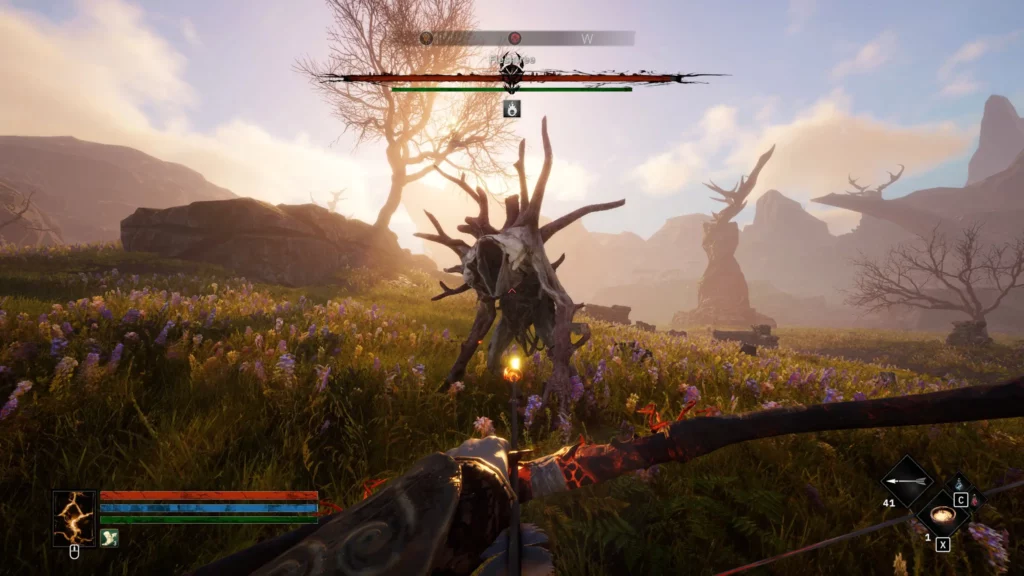
This situation creates inventory management problems where useful equipment sits unused in player storage while forcing attribute investment decisions purely for equipment access rather than character development preferences. The gap between equipment discovery and statistical requirement fulfillment often becomes so extensive that players forget about discovered equipment entirely.
Statistical Requirement Inconsistencies
The Fall of Avalon’s equipment system also demonstrates numerous inconsistencies in statistical requirements that complicate character building and strategic planning. Heavy two-handed axes demanding high Dexterity and Perception statistics while daggers require substantial Strength investment creates logical contradictions that confuse players and limit build variety.
These inconsistencies make character build planning significantly more difficult unless players commit to using the game’s predefined equipment sets rather than creating custom character builds. This limitation reduces player creativity and forces conformity to developer-intended character archetypes rather than supporting diverse player preferences.
Despite these significant balance problems, discovering new equipment pieces in The Fall of Avalon remains exciting, particularly when obtained from unique enemy encounters. The anticipation and reward of equipment discovery maintains player interest even when statistical requirements prevent immediate use.
The visual design and functional variety of equipment options demonstrates clear developer investment in creating interesting and diverse gear options, making the balance problems more frustrating because the foundation for excellent equipment systems clearly exists within the current implementation.
Technical Performance and Polish Considerations
Throughout the gameplay experience, various technical issues affect overall game quality beyond combat and equipment concerns. Animation quality varies significantly, with some character interactions featuring awkward movement sequences and uncanny facial expressions that temporarily break immersion during otherwise engaging dialogue encounters.
However, these technical limitations rarely interfere with core gameplay mechanics or story appreciation, functioning more as minor annoyances than serious gameplay obstacles. The consistently excellent voice acting quality helps compensate for visual animation shortcomings by maintaining character personality and emotional investment during important narrative moments.
Environmental collision detection and pathfinding systems generally function reliably, though occasional enemy behavior problems create temporary technical difficulties during combat encounters. These issues appear to stem from artificial intelligence programming limitations rather than fundamental engine problems.
Final Assessment and Recommendation
Tainted Grail: The Fall of Avalon achieves something genuinely remarkable despite its mechanical imperfections and technical limitations. In the areas that matter most for open-world RPGs inspired by classical genre foundations, the game delivers experiences that exceed reasonable expectations and provide lasting value for dedicated players.
The game represents much more than simple nostalgia-driven development, offering a bleak and sometimes frustrating world that knows exactly what kind of experience it wants to provide. The development team commits wholly to their creative vision, creating strong identity elements that persist even when combat mechanics fall short or equipment systems create unnecessary obstacles.
What makes The Fall of Avalon genuinely worth experiencing extends beyond its reverence for classical RPG design principles into how it reinterprets familiar concepts through significantly darker thematic lenses. Questline’s interpretation of Arthurian mythology creates intense and mature narrative experiences that guide players through crumbling civilizations where every decision carries the potential for unintended consequences.
The game offers important lessons about consequence-driven gameplay, but more significantly provides storytelling experiences designed for players who still crave meaningful consequences, genuine immersion, and rewarding discovery within their RPG experiences. While execution occasionally stumbles through technical limitations or design imbalances, the core vision rarely loses focus on its intended identity and thematic goals.
For players seeking narrative depth, meaningful choice consequences, and immersive world exploration, Tainted Grail: The Fall of Avalon provides substantial rewards that justify overlooking its mechanical shortcomings. The game succeeds in creating memorable experiences that linger in player consciousness long after gameplay sessions conclude, demonstrating the power of committed creative vision over technical perfection.
